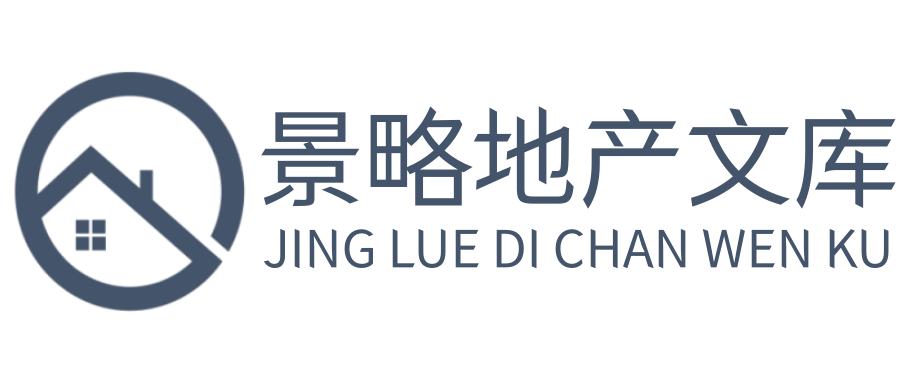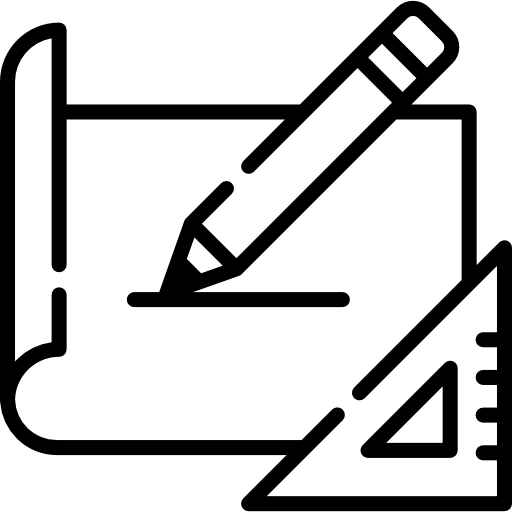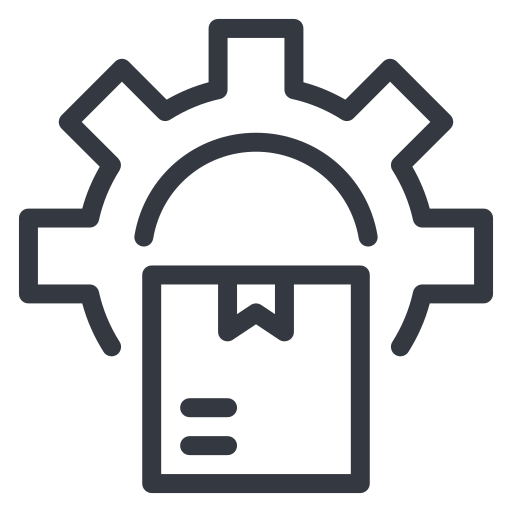1、Emissions Measurement in Supply Chains:Business Realities and ChallengesW H I T E P A P E RN O V E M B E R 2 0 2 3ContentsImages:Getty Images 2023 World Economic Forum.All rights reserved.No part of this publication may be reproduced or transmitted in any form or by any means,including photocopying
2、and recording,or by any information storage and retrieval system.Disclaimer This document is published by the World Economic Forum as a contribution to a project,insight area or interaction.The findings,interpretations and conclusions expressed herein are a result of a collaborative process facilita
3、ted and endorsed by the World Economic Forum but whose results do not necessarily represent the views of the World Economic Forum,the OECD,or Business at OECD(BIAC),nor the entirety of their Members,Partners or other stakeholders.Executive summaryIntroduction1 Sectoral snapshots 1.1 Agriculture and
4、food1.2 Mining1.3 Steel2 Implications 2.1 Features of well-functioning measurement systems2.2 Existing initiatives point in the right direction2.3 Key questions for future dialogueContributorsEndnotes34591112141516161819Emissions Measurement in Supply Chains:Business Realities and Challenges2Executi
5、ve summaryIncreased visibility of supply chain emissions can make a critical contribution to decarbonizing the global economy.It can inform corporate decisions around procurement,product design and research and development(R&D),as well as financial decision-making by investors.These promises cannot
6、be realized if market actors are unable to meet reporting requirements,or if the resulting data are not trustworthy.Policy-makers must therefore carefully navigate the question of supply chain emissions measurement.In addition to measuring,reporting and addressing their direct emissions(Scope 1)and
7、indirect emissions from purchased energy(Scope 2),companies are increasingly facing far-reaching expectations to track emissions from upstream and downstream activities in their value chains(Scope 3).Scope 3 reporting has largely been voluntary,driven by consumer,buyer,investor,employee and civil so
8、ciety expectations,among others.However,a number of regulatory initiatives are underway to make this a mandatory requirement.Commonly used reporting standards provide some guidance,but challenges remain as reporting approaches proliferate;companies determine different emission boundaries,and use dif
9、ferent calculation and allocation methods;data can be costly,inaccurate or unavailable;and certification mechanisms are not yet well established.The complexity of global supply chains exacerbates these challenges.Business interviews also highlight sector-specific challenges to measurement and report
10、ing.For example:Agriculture and food:Farm production is fragmented;differences in geography and biological systems affect emissions,which complicates estimates;comparability is difficult where calculation methods vary;and small producers lack the capacity to provide data.Mining:Downstream emissions
11、reporting remains elusive due to the lack of verified data,varied standards and limited incentives to work with downstream actors;and for iron-ore and coal producers,the steel industry is an important customer but has several different standards.Steel:There is a lack of common standards and incomple
12、te reporting;production processes and technologies vary,as do their environmental impact;as a share of total emissions,Scope 3 is lower and downstream reporting not well developed.As there is no one-size-fits-all approach,industry initiatives have played an important role in testing different measur
13、ement approaches and gradually bringing about alignment among members in some sectors.Especially where supply chains are complex,concerns about substantial costs and other burdens remain.Questions also arise on how emissions that fall outside companies direct management or ownership should best be a
14、ddressed.Well-functioning,interoperable systems for measuring emissions can support decarbonization of the global economy.They must balance accuracy with feasibility,particularly for small and medium-sized enterprises(SMEs)and firms in developing countries.Otherwise,there is a real risk that measure
15、ment and reporting obligations reduce competitiveness and act as barriers to trade,while not achieving their main purpose:fostering effective climate action globally.The key questions for policy-makers,businesses and the broader community include:How to strike the right balance between accuracy and
16、feasibility?How can governments support the development of common standards?How can governments encourage interoperability?How will measurement and reporting be verified?How can small and medium enterprises(SMEs)and firms in developing countries be supported?How can digital tools help?Measuring and
17、reporting emissions in supply chains can be a key lever for decarbonization globally,but inclusive discussions are needed to standardize approachesEmissions Measurement in Supply Chains:Business Realities and Challenges3IntroductionCompanies are increasingly expected to measure,report and act on emi
18、ssions in their supply chains.These expectations come from consumers,business partners,regulators,investors,employees and civil society.For example,in addition to reporting on their direct greenhouse gas emissions(Scope 1)and indirect emissions from purchased energy(Scope 2),firms are increasingly r
19、eporting emissions associated with upstream and downstream activities in their value chains(Scope 3 emissions).The concept of Scope 3 is broader than supply chain emissions it also includes,for instance,emissions associated with employee commuting and investments.2 In most sectors,however,supply cha
20、in emissions(such as from purchased goods and services,upstream and downstream transport and distribution,and the use of sold goods)form the bulk of firms Scope 3 emissions.3Scope 3 reporting has been voluntary,with many businesses doing so to gain a competitive advantage through better insights,to
21、attract sustainability-focused investors,and to demonstrate their commitment to environmental sustainability.However,major developments are underway towards mandatory Scope 3 reporting(Figure 1).Firms are increasingly asked to measure supply chain emissions,but poor data and inconsistent standards c
22、urrently make this harder than it should be.ContextThere are many reasons for collecting Scope 3 emissions data:growing consumer awareness;growing demand for transparency from civil society;new legislation such as the Corporate Sustainability Reporting Directive;and our commitments to the Science-Ba
23、sed Targets initiative.Leading food and drinks manufacturer1Emissions Measurement in Supply Chains:Business Realities and Challenges4In addition to firm-level reporting,supply chain emissions are also relevant for determining product carbon footprints(PCF).Demand is growing for PCF data as an input
24、in Scope 3 calculations.The International Organization for Standardization(ISO)standard ISO 14067:2018 sets out specifications for reporting PCF considering the full life cycle of a product.4 ISO also has other specific emissions reporting standards(e.g.for steel).A recent regulatory development,the
25、 European Union(EU)Carbon Border Adjustment Mechanism(CBAM),requires certain firms to report product-level emissions,including embedded upstream emissions in certain instances.(See Box 1.)Key cross-sectoral developmentsFIGURE 1For use by companies subject to the EU Corporate Sustainability Reporting
26、 Directive.Requires scope 3 reporting unless a company deems it not material(which must then be explained).Uses a double materiality approach to share information on sustainability impacts as well as how the company is impacted by these.International Sustainability Standards Board(established in 202
27、1)European Sustainability Reporting Standards(established in 2023)Sustainability disclosure standards published in 2023 consolidate several previous initiatives,providing information to investors.Requires disclosure of scope 1,2 and 3 emissions.Scope 3 reporting is in line with GHG Protocol.Uses sin
28、gle materiality approach,focused on information necessary for investors decisions.From 2024,assumes responsibilities of the Task-Force on Climate-related Disclosures(TCFD).Sustainability reporting standardsInternational Organization for Standardization(ISO)Partnership for Carbon Transparency(PACT)Pr
29、ovides widely used frameworks to measure GHG emissions,including Scope 3.Provides standards for reporting carbon footprints of organizations,projects and products.Provides guidelines for product-level emissions data accounting and exchange.Greenhouse Gas Protocol(established in 1998)Carbon footprint
30、 standardsScience-Based Targets Initiative(SBTi)(established in 2015)Target-setting process used by 4000+businesses.All companies that submit targets now complete a scope 3 inventory.Criteria for near-term targets also requires a scope 3 reduction target if these comprise more than 40%of a companys
31、emissions.Is in the process of developing resources to guide the adoption,implementation,assessment and tracking of scope 3 targets in a robust and consistent way.This guidance will evaluate scope 3 target boundary criteria and materiality thresholds.It will also assess how different interventions c
32、an help achieve value-chain decarbonization targets.Voluntary target settingCDP(formerly Carbon Disclosure Project)(established in 2000)Global environmental disclosure system for companies,cities,states and regions,covering climate change,water and deforestation.Over 18,700 companies disclosed impac
33、ts in 2022(+42%versus 2021).CDP Supply Chain initiative:340+firms with$6.4 trillion in purchasing power asking suppliers to disclose impacts to CDP.Voluntary disclosureEU Corporate Sustainability Due Diligence Directive(proposed)Includes environmental due diligence requirements.German Act on Corpora
34、te Due Diligence Obligations in Supply Chains(2023)Requires companies to establish procedures to address environment or human rights harms within their supply chains.Would obligate companies of a certain size that have identified climate change as a principal risk or impact to include emissions redu
35、ction objectives in their business plans.The final directive is the subject of negotiations between EU institutions and will likely come into force in 2024 at the earliest.Mandatory due diligenceUS Securities and Exchange Commission Enhancement and Standardization of Climate-related Disclosures for
36、Investors(proposed)Japan Financial Services Agency(FSA)corporate disclosure amendments(2023)Applies to large firms,listed SMEs and non-EU firms with a large presence in the EU.Firms need to report in line with the European Sustainability Reporting Standards.Under the current proposal,companies would
37、 be required to disclose scope 3 emissions if these are material or if they have set targets.Mandatory sustainability disclosures for certain listed companies,based on TCFD.EU Corporate Sustainability Reporting Directive(2023)Mandatory disclosureSource:Authors.Note:These lists are non-exhaustive,and
38、 do not reflect industry-specific initiatives.Emissions Measurement in Supply Chains:Business Realities and Challenges5Reporting requirements under the EUs Carbon Border Adjustment Mechanism(CBAM)BOX 1CBAM,which came into force on 1 October 2023,requires importers to report on direct and indirect em
39、issions embedded in certain goods imported into the EU.5 Following a transition period,importers will have to start paying levies from 1 January 2026 on carbon-intensive imported goods equivalent to those charged to domestic goods under the EUs Emissions Trading Scheme(ETS).Cement,electricity,fertil
40、izers,iron and steel,aluminium and hydrogen are currently covered,with plans to cover all sectors that fall under the ETS by 2030.For many of the sectors covered by CBAM,the regulation notes the relevant“precursors”(material inputs)whose emissions need to be included in the reported embedded emissio
41、ns of the imported good.The European Commission has adopted an implementing regulation for reporting obligations during the transition period and provided accompanying guidance for importers and foreign producers.6 Companies can report in one of three ways:1)by determining emissions based on activit
42、y data and calculation factors or based on the continuous measurement of the relevant GHG in the flue gas(the EUs methodology);2)an equivalent method based on a carbon pricing scheme or emissions monitoring scheme in force where the installation is located(until December 2024);or 3)using default ref
43、erence values(until July 2024).For complex goods,there is some leeway:20%of embedded emissions may be reported based on estimates by the operators of installations.7Understanding supply chain emissions can be a powerful lever for climate action(Figure 2).For example,just eight supply chains are resp
44、onsible for 50%of global emissions,8 and scope 3 accounts for 75%of companies emissions on average.9Estimated shares of emissions scopes per sectorFIGURE 20%10%20%30%40%50%60%70%80%90%100%Agricultural commoditiesCapital goodsCementChemicalsCoalConstructionElectricity utilities Financial servicesFood
45、,beverage&tobaccoGeneralMetals&miningOil&gasPaper&forestryReal estateSteelTransport OEMs*Transport servicesScope 1Scope 2Scope 3Source:CDP,“CDP Technical Note:Relevance of Scope 3 Categories by Sector”.10*original equipment manufacturers.However,while greater transparency on supply chain emissions c
46、an be a powerful lever for decarbonization,it also comes with a number of challenges and may require significant company efforts.Emissions Measurement in Supply Chains:Business Realities and Challenges6Existing standards provide essential guidance,but measuring supply chain emissions entails many ch
47、oices.For example,appropriate emissions boundaries need to be determined,and companies may need to choose whether to use a spend-based approach,average data or supplier-specific estimates.Ideally,supply chain emissions would be tracked using reliable firm-specific primary data,but these can be diffi
48、cult and costly to obtain.Data quality,accuracy and availability pose significant challenges.Suppliers and customers may not always disclose their environmental data,including due to privacy concerns or concerns about revealing sensitive business information.Data may not be available in real time,or
49、 the data may be incomplete or inconsistent.Data quality can vary significantly depending on the region,industry and individual supplier,leading to inaccuracies.Calculation methodologies may differ,and emissions factors the ratio between the pollutant emitted and the activity conducted may be subjec
50、t to variations in time,location and other variables.At present,the emissions factors used are often based on industry averages rather than supplier-specific emissions,which take significant research to build.The growing demand for firm-specific information also requires firms to allocate their ente
51、rprise-or plant-level emissions across different products or services.The choice of allocation method can again be complex and may influence results.Firms also often need to report to a wide range of stakeholders,who may require different reporting formats.The complexity of supply chains amplifies t
52、hese challenges.Some firms have thousands of direct suppliers,and when preceding stages of the supply chain are included,many more suppliers may be involved indirectly.Reporting requirements may also be disproportionately heavy on small and medium-sized businesses and firms in developing countries.B
53、ased on interviews with industry experts,this paper provides a framework for discussion on emissions measurement in supply chains.It includes an overview of measurement and reporting approaches in three sectors agriculture and food;mining;and steel.It offers a snapshot of the preparedness and challe
54、nges of supply chain emissions reporting,and concludes with key questions for policy-makers,particularly trade and economic officials,to consider.ChallengesEmissions Measurement in Supply Chains:Business Realities and Challenges7Sectoral snapshots1Business interviews highlight that firms increasingl
55、y measure supply chain emissions,but encounter practical challenges.Emissions Measurement in Supply Chains:Business Realities and Challenges8Agriculture and food1.1Food supply-chain emissionsThe global food supply chain accounts for an estimated one-third of total human-caused emissions.11 The vast
56、majority of these emissions occur through land-use change(e.g.deforestation to clear land)and farm production(e.g.emissions from fertilizer use or cattle“burps”).Recent years have seen strong growth in initiatives to measure and communicate environmental impacts of food products,including not only g
57、reenhouse gas(GHG)emissions but also water use,water pollution,biodiversity impacts,and more.12While some efforts are linked to regulatory developments(like the EU Corporate Sustainability Reporting Directive(CSRD),which requires many firms in the EU to report Scope 3 emissions),often firms are alre
58、ady quantifying their Scope 3 emissions for other reasons,such as consumer demand or to manage climate risks.Export-oriented firms interviewed for this paper indicated expectations of foreign buyers as a more important factor than government policy.Reporting standards in the agri-food sectorAs in ot
59、her sectors,emissions reporting in the agri-food sector typically draws on GHG Protocol and ISO standards,complemented with sector-specific guidance(see Figure 3).13 GHG Protocol is currently developing its Land Sector and Removals Guidance,which will explain how firms should account for emissions a
60、nd removals from land use and biogenic products(among other issues).14 Sector organizations have also produced specific carbon footprint standards for dairy and beef.15Reporting standards in food supply chainsFIGURE 3Agriculture/FoodAcross sectorsUS dairy guidance(Scope 1,2,3)International Dairy Fed
61、eration,Global Roundtable for Sustainable Beef Carbon footprint guidanceEmissions factors and farm-level calculation toolsAgriculture GuidanceLand Sector&RemovalsFAO Livestock Environmental Assessment and Performance(LEAP)PACT Pathfinder Scope 3 and Product Carbon Footprint guidanceCorporate&Scope 3
62、 ISO 14064-1 GHG emissions at organization levelProduct Life CycleISO 14067 Product Carbon FootprintISO 14040/14044 Life cycle assessmentFirm-levelProduct-levelSpecificGeneralSource:OECD.Emissions Measurement in Supply Chains:Business Realities and Challenges9Fragmented suppliers and variabilityThe
63、agriculture and food sector faces some unique practical challenges in estimating emissions.Measurement of emissions is difficult,in part because farm production is highly fragmented:globally,there are more than 600 million farms.16Another factor complicating emissions measurement is that differences
64、 in,for instance,soils,climate or weather conditions can affect emissions.Emissions measurement thus often uses modelled estimates,which can vary from high-level approximations(e.g.average emissions factors)to more granular,bottom-up calculations using farm-level data.17Primary versus secondary data
65、Retailers around the globe are increasingly tracking Scope 3 emissions and signing up to the Science-Based Targets initiative(SBTi).Food-related emissions are often the largest component of their upstream scope 3 emissions.Retailers are also responding to increased consumer interest in carbon footpr
66、ints with a push towards eco-labels.A leading European retailer explained in an interview that its Scope 3 estimates for agriculture and food are currently modelled estimates,using emissions factors to multiply the purchased volumes,but that work is underway to refine this using more granular second
67、ary data and even primary data from farmers producing for the retailers private label.Gathering primary data for its private-label fresh milk came in at less than 1%of the total production cost,but these costs could go up if greater granularity and product coverage were required.Moreover,information
68、 is harder to obtain for products sold through global supply chains,like tropical fruit.Emissions calculation models can vary too,which makes it difficult for retailers to compare numbers.One leading food and drink manufacturer explained that their Scope 3 calculations currently use emissions factor
69、s from the scientific literature rather than primary data,as they worry that using supplier-provided data might introduce more measurement error.Interviews with companies exporting beef and dairy products revealed that these firms are investing in emissions tracking,in part linked to customer demand
70、 further down the supply chain.This often relies on farm-specific carbon footprint estimates.One interviewee emphasized that the real barriers here are not about cost,but rather about execution,capacity,access to data and the like.Another firm described partnering with a research institute to develo
71、p more accurate emissions factors,as well as using traceability and satellite technology to increase accuracy.Reporting proliferationMany interviewees expressed concern about a fragmented reporting landscape.Industry platforms could play a role in helping to unify the reporting process.Mandatory dis
72、closures could support such efforts by streamlining a fragmented landscape or could undermine them if different jurisdictions adopt different requirements.We are facing big challenges with regard to the comparability of carbon data.Depending on the supply chain,we try to use a single tool for all ou
73、r growers/farmers.However,in international supply chains the challenge is much higher.Many suppliers ended up developing in-house solutions.This has created an issue in the sense that the data is really difficult to use for benchmarking suppliers.Leading European retailerA lot of resources are spent
74、 on reporting on the same metrics in different ways.Stakeholders,investors,customers all have different requirements for how we report the data.This situation often leads to confusion among non-experts.As a consumer-facing company,we worry that it may reduce trust in our reporting.Leading food and d
75、rink manufacturerEmissions Measurement in Supply Chains:Business Realities and Challenges10Mining1.2Mining,the extraction of valuable materials from the earth,serves as the foundation for numerous supply chains,spanning manufacturing,agriculture and energy products.The mining industry itself encompa
76、sses a multifaceted supply chain,including extraction,processing,grading and distribution of raw materials.Each stage presents opportunities for decarbonization through operational efficiency,electrification and renewable energy integration.18 Mining is central to the clean energy transition given t
77、he essential role of metals and minerals in low-carbon technologies(such as batteries for electric vehicles,solar panels or wind turbines).19Scope 1 and 2 emissions in the mining sector account for less than 10%of total emissions by the sector20 and are only significant in the processing stage for c
78、ertain products.Scope 3 emissions include emissions related to R&D activities,machinery usage and raw material transportation.However,most Scope 3 emissions occur downstream in customer industries,complicating the assessment.Reporting standards in miningThe mining industrys diverse product range and
79、 processing methods have led to the development of multiple methodologies and standards for carbon measurement that are not always fully aligned.While the GHG Protocol and ISO standards form the basis,their broad principles are subject to various interpretations when implemented for specific product
80、s or production“routes”,causing discrepancies across companies and products.However,emerging financial disclosure mandates and the launch of the new International Sustainability Standards Board(ISSB)standards that incorporate the recommendations of the Task Force on Climate-related Financial Disclos
81、ures(TCFD)are expected to enable convergence.Additionally,initiatives like the International Council on Mining and Metals(ICMM)alignment exercise and the Coalition on Materials Emissions Transparency(COMET)aim to create a harmonized GHG calculation framework applicable to all mineral supply chains.2
82、1 One interviewee recognized that a more evolutionary process towards convergence is necessary as the industry tests out different methodologies.Downstream emissions challengesThe mining industrys Scope 3 reporting for downstream industries remains in its infancy,relying predominantly on estimates r
83、ather than verified data.While incentives exist to work with upstream suppliers to monitor carbon footprints and to introduce low-carbon technologies,the downstream scenario is different.As one industry expert noted,there is a perceived lack of control and incentive to monitor emissions when the onu
84、s of decarbonization lies with another sector.Varied standards in downstream industries further complicate data collaboration.However,the push towards SBTi targets,which mandate the inclusion of Scope 3 emissions when they exceed 40%of a companys total emissions,is gradually changing this landscape.
85、22Inter-industry interoperability:Mining and steelFor mining firms producing iron ore and coal,the steel industry is a primary customer and a significant carbon emitter.The lack of consensus on carbon measurement in the steel industry(see next case study),coupled with a plethora of standards,poses c
86、hallenges.Developing product-level data,such as life cycle assessment(LCA)methods,becomes arduous in the absence of good alignment of measurement methodologies and definitions of products across the supply chain.Another issue is the potential for double counting when adding the emissions of iron ore
87、,coal and steel companies that belong to the same supply chain.Technical solutions exist,but rely on the use of comparable data.Scope 3 reporting is mainly upstream for purchased goods,materials,fuels and transport.We are not looking that much at the downstream side given the branching out of the va
88、lue chain and lack of control over use of the output.This is still voluntary but will become mandatory.Industry associationFor some of our customers,there is not a lot of confidence in the accuracy of the reporting,while some other customers may not report at all.Aggregating this information is diff
89、icult().If all companies downstream reported scope 1 and 2 emissions reliably,then our scope 3 reporting would be easier.Leading mining companyEmissions Measurement in Supply Chains:Business Realities and Challenges11Global steel production in 20211.95billion tonnesSteel industrys share of global em
90、issions7-9%inhave an annual capacity of 1,016steel plants89countries3billion tonnesRecent equity funding for a green hydrogen steel plant targeting 5 million tonnes per year by 2030 1.5billionSteel1.3According to International Energy Agency(IEA)data,the steel industry accounts for around 2.8 gigaton
91、nes of carbon dioxide(CO2)emissions per year,equal to 8%of global energy emissions.23 Moving to net-zero emissions will require important transformations in technologies,processes and sourcing strategies.Vast quantities of capital will need to be directed towards this effort.A study of the largest s
92、teel producers across different regions highlights that almost all of them have set decarbonization targets,while two-thirds have set a net-zero target.24As the production of steel is energy intensive,the sector has important Scope 1 and 2 emissions.However,emissions level depends on the production
93、process and type of supply chain.There are three main steel-producing“routes”:(1)integrated production from iron ore using blast furnaces for ironmaking and then basic oxygen furnaces for steelmaking;(2)secondary production from scrap steel using electric arc furnaces(EAF);and(3)production based on
94、direct reduced iron,also using EAF.On average,EAF produces 71%less CO2 per tonne of steel.29 Recycling steel(scrap-based production)also lowers the carbon footprint,but there is currently not enough scrap to cover an increasing demand for steel around the world.Downstream emissions are also signific
95、ant since steel inputs are used in a variety of final industries,such as construction and motor vehicles.Steel producers are also increasingly under pressure to provide information on their carbon footprint to customers.These requests are typically at the product level,while regulatory requirements
96、are more likely to target the facility or corporate level.Different measuring sticksWhile the companies interviewed highlighted the importance of developing common standards and methodologies for carbon emissions measurement to track progress and drive efforts towards decarbonization,the state of pl
97、ay remains fragmented.The World Steel Association(worldsteel)has developed a CO2 methodology for site-level emissions that aims to be a practical tool adapted to all steel-producing routes.A second set of standards for carbon measurement comes from ISO and builds on worldsteel work.However,the ISO 1
98、4404 series has separate standards for each of the three routes.Finally,a third set of standards comes from the ResponsibleSteel initiative which also provides certification and independent verification.All these standards follow the definitions and principles of the GHG Protocol.However,they differ
99、 in scope for the emissions reported,particularly when it comes to Scope 3.In addition,they do not always align in terms of emissions factors and provide different calculation methods that create Snapshot of statistics for the steel industryFIGURE 4Source:Authors,based on World Steel Association(202
100、0),25 World Steel Association(2022),26 Global Energy Monitor(2023)27 and H2 Green Steel28(2023).Emissions Measurement in Supply Chains:Business Realities and Challenges12comparability issues across production routes.30 There is no harmonization of product-level reporting standards either.31 Limited
101、reporting Industry experts interviewed for this paper expressed concern that the absence of common measurement standards would complicate the implementation of new regulatory requirements including those linked to financial disclosure,due diligence reporting,the EUs emissions trading scheme(ETS)and
102、CBAM.The current landscape also fails to equip steelmakers to accurately undertake Scope 3 reporting for increased investor and buyer interest(linked to SBTi target setting).Finally,differences in measurement methods and incomplete reporting are also an obstacle to the development of new standards f
103、or“green”(or low-carbon)steel,which gets no price premium at this stage.Heterogeneity in production and decarbonization pathwaysDifferences in technologies and production processes,their environmental impact and prospects for decarbonization are factors that explain why it is more difficult to conve
104、rge on common carbon measurement standards in the steel industry.32 A single standard would need to cover both the primary and secondary routes,while also considering the constraints in resource availability.However,as one interviewee noted,there might be several definitions and methodologies,but wh
105、at is important is the comparability of the underlying data collected and the interoperability across definitions.We cant spend another half decade on how to measure carbon emissions.We need to get on with it and agree on the cornerstones It would be a disservice to the world and the industry if we
106、are still discussing how to measure carbon in 2030.Leading steel manufacturerEmissions Measurement in Supply Chains:Business Realities and Challenges13Implications2Public-private cooperation is essential for well-functioning measurement systems that balance accuracy and feasibility and are interoper
107、able.Emissions Measurement in Supply Chains:Business Realities and Challenges14Features of well-functioning measurement systems2.1Policy-makers must carefully navigate the question of emissions measurement across supply chains.Increased visibility of supply-chain emissions can make a critical contri
108、bution to efficient,market-based approaches to decarbonizing the global economy.It can inform corporate decisions around procurement,product design,R&D and investment.Greater visibility on supply-chain emissions could also enable more effective policy support for green products,through economic ince
109、ntives,public procurement requirements and trade preferences.These promises cannot be realized if market actors are unable to meet reporting requirements,or if the resulting data are not trustworthy.It can be costly and difficult to obtain accurate Scope 3 emissions estimates,and the available estim
110、ates can vary depending on choices made around definitions,boundaries,materiality and measurement approaches,among other factors.This variability will challenge trade policy-makers if supply-chain emissions are used as a basis for market access or preferences,as is the case with the EUs CBAM in cert
111、ain instances.Supply-chain emissions measurement obligations could also emerge as non-tariff barriers since suppliers will have to help firms satisfy financial disclosure and due diligence reporting requirements.Small firms may find implementation prohibitively costly and poorer countries may find t
112、hemselves without market access.Widespread industry target-setting around Scope 3 could have a similar effect.In the case of measures imposed by governments,the World Trade Organizations(WTO)Technical Barriers to Trade(TBT)Agreement allows members to challenge technical regulations,standards and con
113、formity assessment procedures as discriminatory or more trade restrictive than necessary to fulfil a legitimate public policy objective(such as the protection of the environment).To avoid such outcomes,members are encouraged to base their measures on internationally recognized standards.33 WTO commi
114、ttees can function as forums to discuss emerging regulation.34Well-functioning,interoperable systems for measuring supply chain emissions can be enablers for decarbonizing the global economy.This paper has identified the following important features of such systems,recognizing that there may be trad
115、e-offs among them.AccuracyAccurate estimates would make it possible to benchmark suppliers,and to track firms progress in decarbonizing their own activities and their supply chains.They would allow firms and governments to integrate carbon footprints into procurement processes and would empower cons
116、umers to make more sustainable choices.Accurate data would also facilitate firms access to finance.By contrast,building a reporting system around weak data carries important risks:firms and financial intermediaries could be accused of greenwashing,and consumers and voters could lose trust.Feasibilit
117、y Costs and time spent on measuring and reporting should remain manageable for companies,particularly for SMEs and firms in developing countries.Some interviewees noted diminishing returns after a point,and that the cost and personnel time spent on measuring and reporting should not become a distrac
118、tion from the actual work of decarbonizing supply chains.Information technology solutions are needed to facilitate the exchange and comparability of data.Thought should be given and support provided to capacity-building programmes for exporters in developing economies.InteroperabilityStandardized me
119、thodologies and interoperable technical systems for exchanging carbon footprint data are critical infrastructure on the path to net-zero emissions.The basic outline of a standardized system is in place,notably through the GHG Protocol and ISO standards.At the same time,the existing standards still l
120、eave many technical questions unanswered,and different answers lead to inconsistent emissions estimates.More work is needed to make sure that various approaches to measure emissions are interoperable across industries.Emissions Measurement in Supply Chains:Business Realities and Challenges15Existing
121、 initiatives point in the right directionKey questions for future dialogue2.22.3Several industry initiatives have emerged to help tackle these challenges.In chemicals,for example,Together for Sustainability(TfS)has developed detailed guidance for product carbon footprints of chemical products35 and
122、is piloting a data-sharing solution to enable firms in the industry to safely share upstream carbon footprint data.In logistics,the Smart Freight Centres Global Logistics Emissions Council(GLEC)36 has similarly developed a framework to harmonize the calculation of logistics emissions across differen
123、t modes of transport.The Smart Freight Centre and the European Chemical Industry Council(Cefic)have collaborated on specific guidance on emissions measurement for European chemicals transport and logistics.37 Cefic included these emission measurement best practices in its assessment scheme SQAS(Safe
124、ty and Quality Assessment for Sustainability).38 European chemical producers now have much better visibility on the emissions management performance of their logistics service providers.In other sectors such as steel,however,progress has been slow so far.In the agri-food sector,too,different calcula
125、tion methods co-exist,which currently makes it difficult to make meaningful comparisons.However,across the supply chain,efforts are underway to improve emissions measurement.For example,the Partnership for Carbon Transparency(PACT),hosted by the World Business Council for Sustainable Development(WBC
126、SD),has developed cross-sectoral guidance for emissions reporting along supply chains,and is also working to ensure interoperability of technological solutions.39The following represent a set of key questions policy-makers and a broader community may wish to consider in this area going forward.How t
127、o strike the right balance between accuracy and feasibility?A relatively accurate measure of carbon emissions along supply chains is useful but must be weighed against costs and practical realities in different sectors and contexts.Efforts to improve the measurement of supply-chain emissions should
128、not become a distraction from the actual work of decarbonization.How can governments support the development of common standards?Governments may not need to take a leading role in standard-setting where industry convergence emerges.Where it doesnt,technical discussions with the private sector in an
129、intergovernmental format could be the answer,taking into consideration scientific and civil society input.How can governments encourage interoperability?Interoperability across industries and countries is key.There is a trade-off between accounting for differences and specificities of each sector,an
130、d having simple methods that can be applied across products,firms and countries.Once convergence has been achieved in one industry,there should be“interfaces”to other industries and their own converged standards.PACT and COMET may serve as examples.When introducing regulations that touch upon emissi
131、ons measurement(carbon markets,financial disclosure,carbon taxes or border adjustments,due diligence,etc.),governments should build on existing approaches and standards,and engage with the private sector and civil society organizations,to maximize interoperability.Policy-makers do not sufficiently u
132、nderstand what is happening.This is a new language to them.The nexus of trade and sustainability is increasingly important,and policy-makers are not really aware of how fast things are changing.Leading dairy processorEmissions Measurement in Supply Chains:Business Realities and Challenges16How will
133、reporting be verified?Independent verification of reported emissions will be important for regulatory compliance,and to provide credible data to business partners,investors and civil society stakeholders.This points to a growing role for conformity assessment and assurance providers(e.g.auditors,and
134、 testing,inspection and certification(TIC)companies).How can SMEs and firms in developing countries be supported?The impact of emissions measurement and reporting obligations(de jure and de facto)on SMEs and on firms in developing countries should not be underestimated.If managed well and transparen
135、tly,with adequate support and flexibilities,the growing trend towards measuring supply-chain emissions could help these actors decarbonize.If not,they could lead to negative impacts on livelihoods and little impact on decarbonization.How can digital tools help?One way to reconcile accuracy and feasi
136、bility in measuring supply-chain emissions is through digital tools which automate as much as possible the necessary calculations and data transmissions.These tools can also provide an audit trail for verification.Industry initiatives such as TfS and PACT recognize the importance of an ecosystem of
137、interoperable digital tools.Policy-makers,too,should study how digital tools can be used to facilitate compliance with mandatory disclosure.Where industry is unable to converge on a data exchange standard,governments should organize technical discussions with relevant stakeholders.Emissions Measurem
138、ent in Supply Chains:Business Realities and Challenges17ContributorsBusiness at OECD(BIAC)Dominik KmmerlePolicy Director and Strategic Communications,Business at the OECD,BIAC,ParisHanni RosenbaumBusiness at the OECD,BIAC,ParisOrganisation for Economic Co-operation and Development(OECD)Cemre Balaban
139、Trade Policy Analyst,Trade and Agriculture Directorate,OECD,ParisKoen DeconinckEconomist/Policy Analyst,Trade and Agriculture Directorate,OECD,ParisMarion JansenDirector,Trade and Agriculture Directorate,OECD,ParisSbastien MiroudotSenior Trade Policy Analyst,Trade and Agriculture Directorate,OECD,Pa
140、risWorld Economic ForumKimberley BotwrightHead of Sustainable Trade,World Economic Forum,GenevaAditi VerghesePolicy Lead,International Trade and Investment,World Economic Forum,GenevaReviewersFlorian AnderhuberDirector Energy&Climate,Euromines,BelgiumJos Antnio Silveira FerreiraEnvironment and Susta
141、inability,Marfrig Global Foods SA,BrazilTzutzuy Ramirez HernandezHead of Climate and Nature,Syngenta Group,SwitzerlandAndrew KempsonGeneral Manager Global Climate Policy,Fonterra Co-operative Group Limited,New ZealandIlaria MarcheseEconomic Analyst,Nestl,SwitzerlandHelen MedinaSenior Public Affairs
142、Manager,Government and Multilateral Relations,Nestl,SwitzerlandDominic NewburySustainable Sourcing Manager,Syngenta Group,SwitzerlandLeandro Alves RosaSustainability Specialist,Marfrig,BrazilArmen StepanyanManager,Environment and Climate Change,ArcelorMittal Limited,United KingdomStphane TondoClimat
143、e Change/Government Affairs,ArcelorMittal Europe,LuxembourgThe document has also benefitted from the review and contributions of several Business at OECD(BIAC)members.Emissions Measurement in Supply Chains:Business Realities and Challenges181.Quotes have been taken from interviews with business repr
144、esentatives.Their insights have been anonymized and aggregated,where necessary,to allow open exchange.2.The GHG Protocol Corporate Value Chain(Scope 3)Accounting and Reporting Standard provides further detail on the categories and guidance for reporting.See Greenhouse Gas Protocol,“Corporate Value C
145、hain(Scope 3)Standard,2011”,https:/ghgprotocol.org/corporate-value-chain-scope-3-standard.3.CDP,“CDP Technical Note:Relevance of Scope 3 Categories by Sector”,https:/ 14067:2018 Greenhouse gases Carbon footprint of products Requirements and guidelines for quantification”,2018,https:/www.iso.org/stan
146、dard/71206.html.5.EUR Lex,“Commission Implementing Regulation(EU)2023/1773”,17 August 2023,C/2023/5512,http:/data.europa.eu/eli/reg_impl/2023/1773/oj.Other regulatory developments include EU proposals to ban“greenwashing”,e.g.by restricting the use of terms such as“carbon neutral”.See https:/www.eur
147、oparl.europa.eu/news/en/press-room/20230918IPR05412/eu-to-ban-greenwashing-and-improve-consumer-information-on-product-durability.6.European Commission,“Commission Implementing Regulation(EU)2023/1773 of 17 August 2023 laying down the rules for the application of Regulation(EU)2023/956 of the Europe
148、an Parliament and of the Council as regards reporting obligations for the purposes of the carbon border adjustment mechanism during the transitional period”,17 August 2023,https:/eur-lex.europa.eu/legal-content/EN/TXT/?uri=OJ%3AJOL_2023_228_R_0006;European Commission,“Carbon Border Adjustment Mechan
149、ism”,https:/taxation-customs.ec.europa.eu/carbon-border-adjustment-mechanism_en#resources.7.European Commission,Implementing Regulation,Articles 4-5.8.World Economic Forum,“Net-Zero Challenge:The supply chain opportunity”,21 January 2021,https:/www.weforum.org/reports/net-zero-challenge-the-supply-c
150、hain-opportunity.9.CDP,“CDP Technical Note:Relevance of Scope 3 Categories by Sector”,https:/ al,“Food systems are responsible for a third of global anthropogenic GHG emissions”,Nature Food,pp.198-209,2021,https:/doi.org/10.1038/s43016-021-00225-9.12.Deconinck,K.et al,“Fast and furious:the rise of e
151、nvironmental impact reporting in food systems”,European Review of Agricultural Economics,pp.1310-1337,2023,https:/doi.org/10.1093/erae/jbad018.13.Greenhouse Gas Protocol,“Agriculture Guidance”,https:/ghgprotocol.org/agriculture-guidance,accessed on 17 September 2023.14.Greenhouse Gas Protocol,“Land
152、Sector and Removals Guidance,”https:/ghgprotocol.org/land-sector-and-removals-guidance,accessed on 19 September 2023.15.International Dairy Federation,“Bulletin of the IDF N520/2022:The IDF global Carbon Footprint standard for the dairy sector”,https:/shop.fil-idf.org/products/the-idf-global-carbon-
153、footprint-standard-for-the-dairy-sector,accessed on 19 September 2023;Global Roundtable for Sustainable Beef,“GRSB Beef Carbon Footprint Guideline,”https:/grsbeef.org/grsb-beef-carbon-footprint-guideline/,accessed on 19 September 2023.16.Lowder,S.K.et al,“Which farms feed the world and has farmland
154、become more concentrated?”,World Development,pp.105455,2021,https:/doi.org/10.1016/j.worlddev.2021.105455.17.Deconinck,K.et al,“Fast and furious:the rise of environmental impact reporting in food systems”,European Review of Agricultural Economics,pp.1310-1337,2023,https:/doi.org/10.1093/erae/jbad018
155、.18.Delevingne,L.et al,“Climate risk and decarbonization:What every mining CEO needs to know”,McKinsey&Company,28 January 2020,https:/ Energy Agency(IEA),“The Role of Critical Minerals in Clean Energy Transitions”,2022.20.Carbon Disclosure Project,“Relevance of Scope 3 Categories by Sector”,CDP Tech
156、nical Note,CDP-technical-note-scope-3-relevance-by-sector.pdf.21.RMI,“Coalition on Materials Emissions Transparency(COMET):Accelerating Decarbonization by Establishing Carbon Transparency”,https:/rmi.org/our-work/climate-intelligence/supply-chain-emissions-initiative/comet.22.SBTi,“SBTi Criteria and
157、 Recommendations for Near-Term Targets”,https:/sciencebasedtargets.org/resources/files/SBTi-criteria.pdf.23.IEA,“Emissions Measurement and Data Collection for a Net Zero Steel Industry”,https:/www.iea.org/reports/emissions-measurement-and-data-collection-for-a-net-zero-steel-industry.24.OECD,“Addres
158、sing steel decarbonisation:challenges for industry and policy”,interim report,2023.EndnotesEmissions Measurement in Supply Chains:Business Realities and Challenges1925.World Steel Association,“Climate change and the production of iron and steel”,https:/worldsteel.org/climate-action/climate-change-an
159、d-the-production-of-iron-and-steel/.26.World Steel Association,“December 2021 crude steel production and 2021 global crude steel production totals”,25 January 2022,https:/worldsteel.org/media-centre/press-releases/2022/december-2021-crude-steel-production-and-2021-global-totals/.27.Global Energy Mon
160、itor,“Global Steel Plant Tracker”,https:/globalenergymonitor.org/projects/global-steel-plant-tracker/.28.H2 Green Steel,“H2 Green Steel raises 1.5 billion in equity to build the worlds first green steel plant”,7 September 2023,https:/ Steel Association,“Our Performance:Sustainability Indicators”,htt
161、ps:/worldsteel.org/steel-topics/sustainability/sustainability-indicators/.30.Biberman,J.et al,“Conflicts Between GHG Accounting Methodologies in the Steel Industry”,Columbia Center on Sustainable Investment,pp.12-2022.31.In addition to site-level or production-based measurement methodologies,there a
162、re product-level standards developed by worldsteel(Life Cycle Inventory),ISO(20915 series)and ResponsibleSteel.32.OECD,“The heterogeneity of steel decarbonization pathways”,Report prepared for the 2023 Japanese Presidency of the G7,https:/read.oecd.org/10.1787/fab00709-en?format=pdf.33.WTO,Agreement
163、 on Technical Barriers to Trade,Art.2,https:/www.wto.org/english/docs_e/legal_e/17-tbt_e.htm.For more on how the WTOs TBT Agreement can contribute to emission standards and climate change mitigation,see WTO,“Trade and Climate Change:Information Brief No.6”,https:/www.wto.org/english/news_e/news21_e/
164、clim_03nov21-6_e.pdf.34.For more on how the WTOs TBT Agreement can contribute to emission standards and climate change mitigation,see WTO,“Trade and Climate Change:Information Brief No.6”,https:/www.wto.org/english/news_e/news21_e/clim_03nov21-6_e.pdf.35.Together for Sustainability,“The Product Carb
165、on Footprint Guideline for the Chemical Industry”,Version 2.0,2022,https:/www.tfs- Freight Centre,“The GLEC Framework”,https:/www.smartfreightcentre.org/en/our-programs/global-logistics-emissions-council/calculate-report-glec-framework/.37.Cefic and Smart Freight Centre,“Calculating GHG transport an
166、d logistics emissions for the European Chemical Industry”,September 2021,https:/cefic.org/app/uploads/2021/09/Calculating-GHG-transport-and-logistics-emissions-for-the-European-Chemical-Industry-Guidance.pdf.38.Safety&Quality Assessment for Sustainability(SQAS),https:/www.sqas.org/.39.PACT,“Pathfind
167、er Framework”,https:/www.carbon- Measurement in Supply Chains:Business Realities and Challenges20World Economic Forum9193 route de la CapiteCH-1223 Cologny/GenevaSwitzerland Tel.:+41(0)22 869 1212Fax:+41(0)22 786 2744contactweforum.orgwww.weforum.orgThe World Economic Forum,committed to improving the state of the world,is the International Organization for Public-Private Cooperation.The Forum engages the foremost political,business and other leaders of society to shape global,regional and industry agendas.

 全部分類
全部分類
 標準檢索
標準檢索
 招標公告
招標公告

 文檔庫
文檔庫

 專題庫
專題庫

 圖紙庫
圖紙庫

 標準庫
標準庫

 政策庫
政策庫

 招標庫
招標庫


 文檔庫
文檔庫

 專題庫
專題庫

 圖紙庫
圖紙庫

 標準庫
標準庫

 政策庫
政策庫

 招標庫
招標庫











